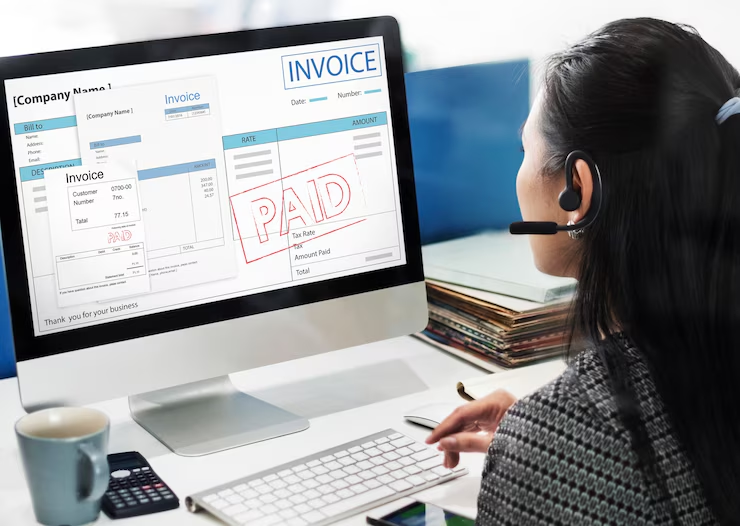
A bill of sale for a car is a legal document that records the transfer of ownership between a buyer and a seller. It should include key details such as the vehicle information, sale price, date of sale, and the names and signatures of both parties. This document protects both sides and ensures clarity in the transaction.
Writing a bill of sale doesn’t have to be complicated. By following a clear format and including essential information, anyone can create a valid and effective bill of sale for a car.
Understanding how to write this document helps avoid disputes and provides proof of purchase. It also often serves as a requirement for registering the car in the new owner’s name.
Understanding a Bill of Sale for a Car
A bill of sale documents the transfer of ownership and contains essential information to protect both buyer and seller. It must be accurate for legal use and often plays a key role in state vehicle registration and title transfer processes.
Definition and Purpose
A bill of sale is a written record showing the sale of a car from one party to another. It includes details like buyer and seller names, vehicle identification number (VIN), make, model, year, sale price, and date of sale.
The purpose is to serve as proof that ownership changed hands and to clarify the terms of sale. It helps prevent disputes by confirming that the buyer received the car as described and that the seller no longer claims responsibility.
Unlike a car title, a bill of sale is not always required for ownership transfer, but it is often requested for tax, registration, or legal matters.
Legal Importance
The bill of sale acts as a legally binding contract that outlines the exchange of the vehicle. It protects the seller from future liability, like traffic violations or damages occurring after the sale.
For the buyer, it provides evidence of purchase, which is necessary to register the car in their name and apply for insurance. Many states require the bill of sale when transferring a title.
Without a bill of sale, the buyer may face challenges proving ownership, especially if the title transfer is delayed or contested.
State Requirements
State laws vary on what must appear in a bill of sale and when it is required. Some states mandate it for all vehicle sales; others do not, but still accept it as proof.
Common required elements include:
- Buyer and seller full names and signatures
- Date of sale
- Vehicle details (VIN, make, model, year)
- Sale price or indication of a gift or trade
Certain states ask for notarization or additional documents like emissions test results to complete the title transfer.
Buyers with low credit scores may face stricter lending requirements, but the bill of sale itself is focused on ownership transfer, not financing. Understanding state rules can ensure the bill of sale supports timely title transfer and accurate tax reporting.
Essential Information to Include
A clear bill of sale must contain detailed and specific information about the parties involved, the vehicle, the sale conditions, and the vehicle’s mileage. This ensures legal clarity and helps avoid disputes.
Buyer and Seller Details
The bill of sale should list the full legal names of both the buyer and seller. Include addresses and contact information such as phone numbers or email addresses. This identifies the parties and provides a method for follow-up.
Including the driver’s license or identification numbers from both parties can add an extra layer of verification. This is especially useful for avoiding fraud or misrepresentation.
The seller may also want to note their role (private seller or dealer) as it can affect warranties or disclosures. Precise buyer and seller information supports the transfer of ownership with fewer legal risks.
Vehicle Information
Detailed vehicle information is essential to link the sale to a specific car. Include the make, model, year, and color. The Vehicle Identification Number (VIN) must be listed exactly as it appears on the car.
Odometer reading at the time of sale is key but is detailed further below. Including the license plate number, if applicable, helps confirm vehicle identity.
If the car has any distinguishing features like custom modifications or aftermarket parts, these should be noted. This protects both parties by recording the exact condition and configuration of the vehicle at the time of sale.
Sale Terms and Conditions
The price paid for the car must be clearly stated in numerical and written form. Any deposits made or balance due should be specified with payment methods.
If applicable, the bill should include terms related to refunds, warranties, or “as-is” conditions. Most private sales include an “as-is” clause, meaning the buyer accepts the car with all faults.
Specify the date and location of the transaction to clarify when ownership changes hands. Also include any additional agreements such as inclusion of extra equipment or transfer of service contracts.
Odometer Disclosure
Accurate odometer disclosure is federally required when transferring ownership of vehicles less than 10 years old. The bill of sale must state the exact mileage shown on the odometer at the time of sale.
Any discrepancies, such as rolled-back or non-operational odometers, must be noted. Failing to disclose correct mileage can result in legal penalties.
The odometer reading affects insurance costs and loan approvals. For example, vehicles with higher mileage may have lower resale value, influencing average car payments and insurance premiums in 2025. Clear odometer disclosure protects both buyer and seller.
Step-by-Step Guide to Writing a Bill of Sale

Writing a bill of sale requires accurate details, verified documentation, and proper signatures. It formalizes ownership transfer and safeguards both buyer and seller by clearly stating terms. Each step ensures legal compliance and clarity during the sale.
Preparing Required Documents
The seller must gather the car title, proof of identity, and a valid registration document. The title needs to be clear of liens or properly reflect any existing ones. The buyer should have their identification ready, and both may need a government-issued ID for notarization.
Check state requirements for additional forms, as some states require specific disclosure statements or odometer readings. If financing is involved, documents related to the loan—such as zero-down or bad-credit car loan agreements—should be reviewed to confirm payment terms do not affect the sale or transfer.
Drafting the Bill of Sale
Start with the date, full names, and addresses of both parties. Clearly describe the vehicle using the year, make, model, VIN, and current mileage. Include the sale price in both numbers and words to avoid ambiguity.
Specify that the car is sold “as-is” unless otherwise stated, and note any warranties or guarantees, if applicable. Adding payment details and terms protects against potential disputes, especially if the buyer is using special financing options. Use plain language and organize information with bullet points or tables for clarity.
Signing and Witnessing
Both buyer and seller must sign the bill of sale to make it legally binding. Some states require the document to be notarized or witnessed to validate the transaction. Confirm local regulations to ensure compliance.
After signing, the buyer should take the bill of sale and the signed car title to the DMV to complete the title transfer. This step is critical to avoid liability issues. The seller should keep a copy for their records, particularly when a loan or special financing plan is involved.
Legal Considerations and Compliance
A valid bill of sale must reflect the specific rules governing the vehicle’s sale in the buyer’s and seller’s state. It must also meet any official notarization requirements and clearly state any existing liens or loans on the vehicle to prevent legal complications.
State-Specific Laws
Each state has specific rules about what information must be included in a car bill of sale. Some require specific forms issued by the Department of Motor Vehicles (DMV) while others accept a generic bill of sale if it contains essential details like buyer and seller names, vehicle description, sale price, and date.
For example:
| State | Required Information | Special Notes |
| California | Odometer disclosure, smog cert | DMV form recommended |
| Texas | VIN, sale price, buyer/seller info | Notarization optional but advised |
| New York | Odometer reading, notarization | Must file with DMV within 30 days |
Buyers and sellers should always check state websites to ensure compliance and obtain state-specific bill of sale templates if available.
Notarization Requirements
Notarization is mandatory in some states to validate the bill of sale. It serves as proof the signatures are legitimate and can prevent fraud.
States like Florida and New York may require notarization for transferring vehicle ownership. In Texas, notarization is optional but strongly recommended to avoid disputes.
When notarization is required, both parties typically sign the document in front of a notary public, who then affixes a seal or stamp. The notarized bill of sale must then be submitted to the DMV or kept for record-keeping purposes.
Lien and Loan Information
If the vehicle still has an outstanding loan or lien, this must be disclosed in the bill of sale to protect both parties. A lienholder’s name and loan details should be listed to ensure the buyer understands the title may have restrictions.
Buyers should verify that the loan is paid off or arranged to be paid at closing to obtain a clear title. Average auto loan interest rates in 2025 range from about 4% for excellent credit to over 12% for lower credit scores, which may affect payoff amounts.
Sellers should obtain a lien release document from the lender before or during the sale. Failure to disclose liens can result in legal and financial complications after the sale.
After the Sale: Next Steps

Once the bill of sale is completed, the seller and buyer must handle important formalities. These include transferring the car title and updating insurance and DMV records. Timely action in these steps prevents future liabilities and legal issues.
Title Transfer Process
The buyer must submit the signed bill of sale and the car title to the local Department of Motor Vehicles (DMV). The seller should ensure the title is properly signed over, including the odometer reading if required.
In most states, the title transfer involves paying a fee, usually ranging from $15 to $50. Some states require additional forms like a release of liability or smog certificate. The buyer’s name will then legally appear on the new title, establishing ownership.
Delays in transferring the title can result in fines or complications if the vehicle is involved in accidents or violations. It is critical both parties keep copies of all documents until the process is complete.
Notifying Insurance and DMV
The buyer should update or purchase auto insurance immediately after the sale. The average cost of car insurance in 2025 varies but is approximately $1,600 per year nationally. Comparing rates from leading providers like State Farm, Geico, and Progressive can help find the best coverage.
For those in California, companies like Mercury and CSAA are often cited for cheaper insurance options in 2025. The seller must also notify their insurer and the DMV to remove their name from the vehicle’s record.
Failure to notify can leave the seller liable for incidents involving the car. Both seller and buyer should report the sale to the DMV within the state’s required timeframe, often 5 to 10 days. This step ensures proper legal separation of responsibilities.
Tips for Buyers and Sellers
Buyers and sellers should focus on clear documentation and thorough verification to ensure a smooth transaction. Attention to legal protections and vehicle background details prevents future disputes and unexpected expenses.
Protecting Yourself Legally

Both parties must ensure the bill of sale includes critical details: full names, addresses, vehicle identification number (VIN), sale price, and the exact date of sale. Signatures from both buyer and seller are essential to validate the agreement legally.
It’s important to specify the condition of the vehicle, noting any warranties or “sold as-is” clauses. Sellers should retain a copy for their records, and buyers should verify that title transfer requirements are met promptly to avoid liability.
Using a notarized bill of sale can add an extra layer of legal protection. This reduces risks linked to fraud or disputes over ownership, especially in states with strict title transfer laws.
Verifying Vehicle History
Buyers must obtain a comprehensive vehicle history report using the VIN. This report reveals accident records, lien status, previous owners, and title issues, which influence resale value and repair needs.
Checking for outstanding recalls or repairs can help buyers plan financially, avoiding costly surprises. It is wise to consult resources like 7 tips to help you save money on car repairs for maintenance budgeting.
Sellers should disclose any known issues upfront to maintain transparency and build trust. Failure to disclose significant problems might lead to legal consequences and damage reputation in future sales.
Common Mistakes to Avoid
Errors in a bill of sale can lead to legal issues or delays in transferring ownership. Missing details and incorrect entries are the most frequent problems that buyers and sellers encounter.
Incomplete Documentation
Failing to include all required details in the bill of sale is a common mistake. Essential elements like the vehicle identification number (VIN), make, model, year, and sale price must be clearly stated. Omitting any of these can invalidate the document or complicate registration.
Both parties should also attach copies of their identification and proof of ownership. Without these, states may reject the sale when processing title transfer. Completing all paperwork promptly avoids hold-ups that can affect financing options, including those linked to the best credit cards of May 2025 or easiest credit cards to get, should the buyer choose to use credit.
Incorrect Information
Mistakes in spelling names or entering numbers, such as mismatched VINs or an inaccurate sale date, often cause legal disputes. It is important to double-check every line for accuracy before signing.
Errors in the price or odometer reading can lead to accusations of fraud or buyer’s remorse claims. Confirm the car’s odometer reading matches the official records. Accurate information ensures the bill supports the buyer using financing options correctly, especially relevant when applying with the easiest credit cards to get.
Sample Car Bill of Sale Template
A car bill of sale should clearly state the vehicle details, buyer and seller information, and terms of sale. It must be easy to understand and include spaces for signatures to make the transaction official.
Free Downloadable Example
The downloadable template should include key fields such as:
| Field | Description |
| Seller’s Full Name | Legal name of the person selling |
| Buyer’s Full Name | Legal name of the person buying |
| Vehicle Description | Make, model, year, VIN |
| Sale Price | Amount paid for the car |
| Date of Sale | Exact date of the transaction |
| Odometer Reading | Mileage at the time of sale |
| Signatures | Spaces for buyer and seller |
This format simplifies the sale and protects both parties. It can be printed and filled out by hand or typed directly on a device.
Customizing Your Bill of Sale
To customize the bill of sale, he or she should add any specific terms like “sold as-is,” warranty disclaimers, or payment plans. Including these details helps prevent future disputes.
Adjusting the template to local legal requirements is important. Some states require notarization or additional forms. Checking with the DMV or a legal advisor ensures compliance.
This customization allows the seller to finalize the deal efficiently, possibly freeing up funds faster—one of many simple ways to make $100 fast by turning a car sale into quick cash.
Frequently Involved Financial Considerations
When selling or buying a car, managing the financial aspects carefully is essential to avoid disputes or losses. This involves secure payment methods and understanding all relevant taxes and fees associated with the transaction.
Handling Payments Securely
Ensuring payment security protects both parties from fraud or non-payment. Common methods include cash, certified checks, or electronic transfers such as wire transfers or payment apps with buyer and seller protections.
Buyers should avoid personal checks unless verified in advance. Sellers must confirm funds clear before handing over the vehicle or title. It is also wise to complete the transaction at a bank to verify the payment’s authenticity.
A bill of sale should explicitly state the amount paid, payment method, and date of transaction. This document serves as proof in disputes, and specifying the terms clearly can prevent confusion.
Taxes and Fees
Sales tax on vehicle transactions varies by state and is usually based on the purchase price or the vehicle’s fair market value. Sellers and buyers should check local DMV rules to estimate the exact tax amount.
Federal income tax rates generally don’t apply directly to car sales unless the transaction involves business assets or capital gains. This depends on factors like the seller’s tax bracket and duration of ownership.
Additional fees might include title transfer fees, registration charges, and emissions testing costs. These costs can range from $50 to several hundred dollars depending on the state.
Understanding these costs upfront helps buyers budget correctly, while sellers should prepare for any tax reporting if the sale relates to business or investment purposes.




